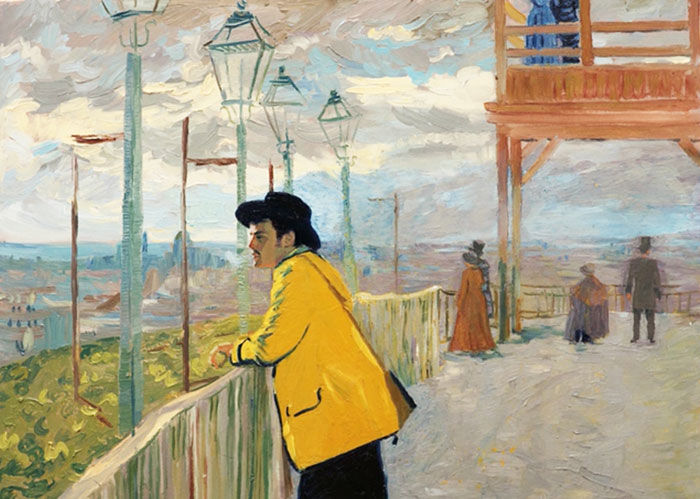Review: Loving Vincent
- Pamela Villaflores
- Nov 15, 2017
- 2 min read

Vincent Van Gogh, the Dutch painter ignored during his time but much celebrated after his death, died at the age of 37 from a self-inflicted gunshot wound. Or did he? Using the theory first put forth in Steven Naifeh and Gregory White Smith's 2011 Van Gogh: The Life, directors Dorota Kobiela and Hugh Welchman offer an Agatha Christie-like whodunit covering the artist's last months in the animated biographical drama Loving Vincent.
"How does a man go from being absolutely calm to suicidal in six weeks?" The answer to that question is sought by the film's narrator and sleuth, Armand Roulin (Douglas Booth) who, during the course of the film, vacillates between sceptic and sympathiser. Roulin has been tasked by his father (Chris O'Dowd) to deliver Vincent's final letter to his beloved brother Theo. Recalling the time Van Gogh presented his mutilated ear to a local prostitute, Armand, who was the subject of several of Van Gogh's paintings, views the artist as a crazy man well deserving of the ostracism he received from the townspeople. Armand's father disagrees, reasoning that it was that same shunning that broke the mentally unstable artist, and convinces him to deliver the letter.
Thus Armand journeys to Auvers-sur-Oise, where Van Gogh spent his final months, encountering characters with conflicting opinions of the Dutchman. Amongst them, paint supplier Pere Tanguy (John Sessions), young Marguerite (Saoirse Ronan) for whom he may have had more than a fondness, and her father, Doctor Gachet (Jerome Flynn), who was present for Van Gogh's final moments and who may have been a significant factor in Van Gogh's emotional turnabout. Another doctor, Mazery (Bill Thomas), doubts Van Gogh pulled the trigger on himself, instead opining that the perpetrator was a local boy who often tormented the artist.
In truth, Armand's investigative interviews are not particularly interesting and they often render Van Gogh's paradoxical complexities as trite and stereotypical. Yet the narrative is clearly secondary to the filmmakers' main focus, which is to create a visual homage to the painter. On that front, the film is an impressive achievement; over 100 artists were used to ensure that every frame is impeccably hand-painted and then animated into life. Not only is the film done in the style of Van Gogh, but 94 of his works have been meticulously incorporated, which makes Loving Vincent a must-see for Van Gogh enthusiasts.
As remarkable an accomplishment as it is, perhaps what's most noteworthy about the filmmakers' method is how the animated renderings dilute the power of their comparatively static sources. Van Gogh's works were immersive and brimming with life - his brushstrokes were lusty breaths, his colours radioactive - and, despite the tremendously painstaking effort by the filmmakers and their team of artists, Loving Vincent is but a pale imitation.
Loving Vincent
Directed by: Dorota Kobiela, Hugh Welchman
Written by: Dorota Kobiela, Hugh Welchman, Jacek Dehnel
Starring: Douglas Booth, Jerome Flynn, Saoirse Ronan, Helen McCrory, Chris O'Dowd, John Sessions, Eleanor Tomlinson, Aidan Turner, Robert Gulaczyk





Comments